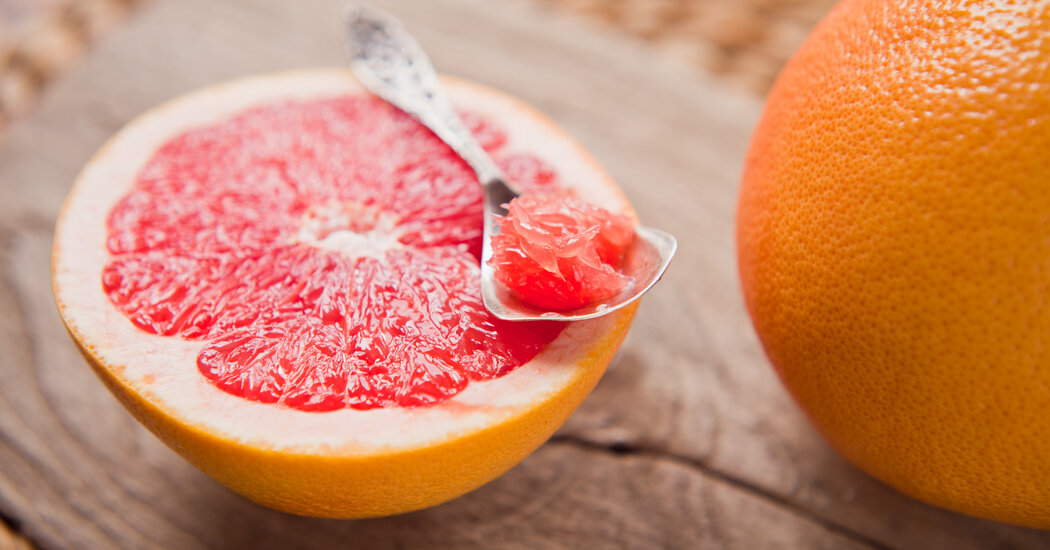
You may be among the millions of people who have seen a surprisingly specific warning like this on the labels of the medications you take:
Avoid eating grapefruit or drinking grapefruit juice while using this medication.
Such warnings are issued for dozens of substances, including docetaxel, an anti-cancer drug; erythromycin, an antibiotic; and some statins, the cholesterol-lowering drugs prescribed to more than a third of American adults over 40.
The problem is a set of molecules, furanocoumarins. High levels of furanocoumarins interfere with human liver enzymes, among other processes. In their presence, drugs can build up to unhealthy levels in the body. And grapefruits and some related citrus fruits are full of them.
But there is no similar warning for other types of citrus fruits, such as tangerines and other oranges. Researchers at the Volcani Center in Israel reported Wednesday in the journal The New Phytologist that, by crossing mandarins and grapefruits, they discovered the genes that produce furanocoumarins in some citrus fruits. It’s a discovery that opens up the possibility of creating grapefruits that don’t require a warning label.
Scientists worked out the structures of the compounds and put together a basic flowchart of how they are made years ago, said Yoram Eyal, a professor at the Volcani Center. But the precise identity of the enzymes catalyzing the process – the proteins that cut a branch here, or add a piece there – remained mysterious. He and his colleagues knew that one way to identify them was to cross citrus fruits rich in furanocoumarins with those without. If the offspring of such a cross had varying levels of substances, it should be possible, by digging into their genetics, to identify protein genes.
“We were afraid to tackle it, because it takes a long time and takes many years,” he said, noting how complicated it can be to grow new trees from seed and evaluate their genetics. “But ultimately, we decided we had to dive in.”
When they examined the offspring of a tangerine and a grapefruit, the researchers saw something extraordinary. Fifty percent of young plants had high levels of furanocourmain, while 50% had none. That particular signature meant something very specific, in terms of how the ability to produce these substances is inherited.
“We saw that there was only one gene that could control it,” said Livnat Goldenberg, a researcher at the Volcani Center and lead author of the new study.
Researchers soon identified the gene that controls the production of furanocoumarins in leaves and fruits, which produces an enzyme called 2-oxoglutarate-dependent dioxygenase, or 2OGD for short. Mandarins were found to have a mutated form of this gene that prevents the enzyme from working properly. This version appeared in all mandarin and orange varieties examined by researchers, explaining why they don’t cause the same problems as grapefruit in people taking prescription drugs. In these plants the production of furanocoumarin is suspended.
With gene editing technology, it should be possible to alter the gene in grapefruit too, suggests Dr Eyal. The Volcani Center team is now exploring this project.
Looking at how widespread this mutated version is in mandarins and some other citrus fruits, scientists hypothesize that some nearby gene on the genome must play an important role in a highly prized trait. A long-ago citrus grower, selecting for some unknown quality, must have unintentionally spread this version of the furanocoumarin-destroying gene to an ancestor of modern mandarin and orange varieties.
After all these years, that person’s work is coming to light, under the gaze of geneticists, who may, one day, put grapefruit back on the menu.
